Thank you for visiting! By the way… any links on this page that lead to products on Amazon and other stores/partners are affiliate links Aquarium Store Depot earns a commission if you make a purchase.
Are you looking for some axolotl tank mates? Axolots generally do quite well by themselves, even when forced to share a tank, they even prefer isolation. If the tank seems a bit empty, however, there are a few tank mates you can consider for this bottom dweller.
Here’s what you need to know when considering tank mates for your Mexican walking fish.
Understanding Your Axolotl
An axolotl is a freshwater bottom-dwelling aquatic salamander that prefers to keep to itself. They do best when kept on their own in an aquarium with slow-moving water.
Despite being antisocial, axolotls are very peaceful creatures. They spend most of their time exploring the bottom of the tank at their own, slow pace. They are also nocturnal which means they will mostly come out at night when the aquarium lights are off.
Keep in mind that Axolotls are carnivores that like to hunt live food1. This means that they may sneak up on resting fish and make a quick snack out of them. Generally, their slow-moving nature ensures the safety of other small fish.
Axolotls are cold water critters. Due to the temperature of the water being so low, it will be unsuitable for a large variety of other freshwater creatures.
What Makes a Good Mate for Your Fish?
If you’re considering upgrading your axolotl tank into a community aquarium, there are a few things to keep in mind. Axolotls usually thrive when kept in isolation. That said, you can try to keep them with other aquatic critters.
Not all fish are good tank mates for axolotls. Those that make the cut are generally peaceful fish that also keep to themselves. Another requirement is being adapted to cool water aquariums.
You might notice your axolotls having a go at their tank buddies, even if they can’t eat them. That’s why it’s important to choose critters that can’t fit into the axolotl’s mouth.
This brings us to the next point, the critters you keep need to be fast enough to escape. Axolotls will try to hunt any live fish and other critters in the same tank as them. If you’re having problems, rather keep your freshwater fish in separate aquariums.
Why Some Fish Aren’t Suitable
Some critters just aren’t suitable axolotl tank mates. Here’s why.
Axolotls prefer cool water. That’s why you can’t add any tropical fish to their tanks. The water is simply too cold. You may need an aquarium chiller to keep the water cool in water climates.
- Temperament
Any aggressive or territorial fish is a bad idea. These creatures will harass your salamander and injure it in the process. Highly active swimmers also aren’t suitable. Their movements will stress your axolotl.
- Health risks
Some freshwater critters pose a health risk to your axolotls. Cory Catfish, for instance, have sharp spines on their pectoral and dorsal fins. These can injure your axolotl if it tries to eat them.
Small fish and mini snails can also be a choking hazard and can lead to impaction. Some critters also carry diseases.
- Direct competition
Other bottom-dwelling fish aren’t a good idea either. Bottom feeders are in direct competition for food. This means your axolotl might bully its tank buddies to get to the food.
If the other critters are very voracious eaters, they also won’t do. Axolotls eat slowly which means they won’t be able to compete for food with other bottom-dwelling fish.
How to Set Up A Community Aquarium
Setting up a community tank is quite simple. Here’s what you need to know:
Aquarium Setup
The minimum size for a one adult axolotl tank is 20 gallons. If you’re thinking of adding two adult axolotls to the same tank, this will be an added cost. You will need to jump to a 55-gallon tank for a pair of axolotls. Similarly, if you’re adding other fish or creatures, start with a minimum of 55 gallons. Bigger is always better, so if you have the space, go bigger.
Substrate
The best substrate for axolotl community tanks is sand since they like to dig. This gives the axolotl something to do instead of chasing the other community creatures around.
Natural sand is excellent for bottom feeder fish to forage around in.
Water Parameters For The Aquarium
Axolotls have very specific needs when it comes to their tank water. Any tank mates you plan on adding should also have the same preferences. Take a look at the following axolotl water parameters to compare them to the requirements of the chosen tank mates.
- Water temperature: Cold water is a must, keep the temperature in the range of 59 to 73 degrees Fahrenheit (15 – 23°C). The ideal temperature is between 60 and 64 degrees Fahrenheit (16 – 18°C).
- pH: Axolotls prefer a pH in the range of 6.5 to 8.0. The ideal pH for this species will be 7.4 – 7.6.
- GH: 125-250ppm (7-14dGH)
- kH: 53-143ppm (3-8dKH)
- Ammonia (NH3): 0 ppm
- Nitrite (NO2-): 0 ppm
- Nitrate (NO3-): <60 ppm
Filtration
It doesn’t matter if an axolotl is in its larval stage or already an adult, they all require a tank with good filtration and slow-moving water. Any tank mates chosen to join an axolotl aquarium should also be happy with this setup.
Axolotl owners usually prefer to use sponge filters in their aquariums. These filters can circulate a large amount of water in a short time without creating a lot of flow in the tank. This is absolutely essential for the messy axolotl.
Decor Considerations
Make sure there are enough hiding spots in your tank. Axolotls prefer to hide away from light. Other creatures in the aquarium will also need a place to relax where they don’t feel threatened by the axolotl. Add some driftwood, rocks, hides, or plants to your tank to create a range of hiding spots to choose from.
Lighting
Other fish may prefer tanks with lights. If this is the case, make sure the axolotl has a dark spot to hide in. It’s best to get tank mates that also prefer a dim interior for a happy community.
Before running to the pet store, make sure to do some research first. There are only a few fish that can be safely kept in the same tank as an axolotl. Even so, these communities are never without their risks. Here’s a list of some suitable tank mate options for your axolotl (And a video by yours truly for those who would rather watch).
Top 5 Axolotl Tank Mates
Let’s look at the best tankmates for these “walking fish.”
1. Other Types
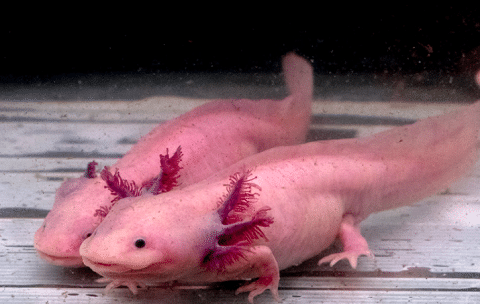
Adult axolotls make great tank mates. It’s best to keep a male and female together, but you can also keep same-gender axolotls together if you don’t want any babies.
You can tell a male from a female axolotl by looking at the cloaca (opening under the tale). In males, the cloaca protrudes quite a bit while it sits nearly flat against the belly in females.
It’s best to not keep a smaller axolotl with a fully matured one. Don’t keep juvenile axolotls together either. They often display cannibalistic tendencies towards each other. Adults may even eat their larvae if given the chance.
If you see any reoccurring problems, it might be better to separate axolotls into different aquariums. One axolotl on its own is best.
2. White Cloud Mountain Minnows

White cloud minnows are peaceful cool water fish that can make excellent tank mates for axolotls. Their lack of spines and shells makes them safe for axolotls to eat. Even though this might not be your goal, they will get chowed every now and again.
There is no real way to prevent your axolotls from hunting these fish, so you might want to consider keeping them in separate tanks. Fortunately, minnows are quite fast. They should be able to escape the axolotls unless caught off guard.
3. Guppy Fish

Guppies are another fish species that rarely pose a risk to your axolotls. Unlike the fast white cloud minnows, guppies will be eaten more often. They do sometimes carry diseases, however.
The babies of guppies are often used as feeder fishes. This means that owners intentionally provide these fish as a snack to their axolotls. Baby guppies are small enough to not pose a health risk when swallowed by juvenile axolotls.
Guppies, being livebearers, reproduce very fast. The sudden increase in fish numbers may stress your axolotl despite it having an easy snack.
4. Zebra Danios
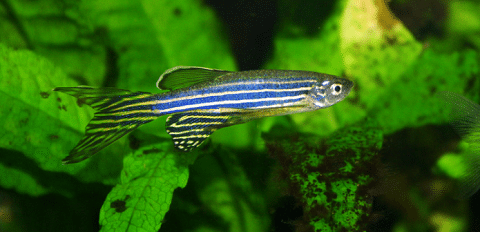
Zebra Danios are also great peaceful cool-water fish to consider. They will keep to their shoals and mostly stay away from your axolotl. Again you might see your fish disappear every now and then. Fortunately, zebra danios are very agile fish so they might stand a chance in an axolotl aquarium.
Just because they can swim, however, doesn’t mean your axolotls won’t catch these danios off guard every once in a while.
5. Apple Snails (As adults)

Adult apple snails can safely be kept in the same aquarium as young axolotls. They aren’t small enough for your walking fish to eat. Baby cold water snails like juvenile bladder or ramshorn snails are also safe since they have soft shells.
Adult ramshorn and bladder snails are risky. They are small enough to swallow, but not soft enough to fully digest.
If you want to keep snails, avoid mini snails and stick to adult apple snails. Multi snails can also be risky as they can climb on your axolotl and suck off their slime coats.
Fish You Should AVOID
This list doesn’t include all the fish that are unsuitable for axolotl community tanks. The species here, are mentioned because they may seem to fit the description of the perfect tank mate, but they really aren’t. Keep an eye out for the following critters.
1. Goldfish
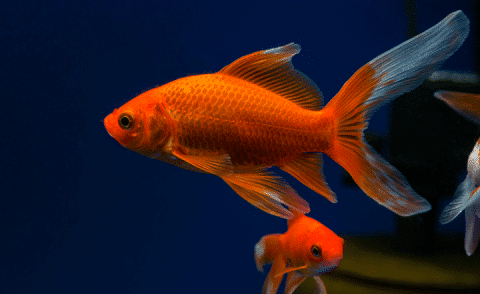
Many think goldfish are great tankmates for axolotls since they also like the cold. Unfortunately, that isn’t true of these freshwater fish. Goldfish have quite a bad reputation for being fin nippers. They also get big which makes harassing your beloved salamander easier.
Goldfish tend to nip at the fins and gills of the axolotl which causes stress and injury to your pet. They also produce a lot of waste which isn’t ideal when added to the mess axolotls already make.
The only goldfish varieties that may work in an Axolotl tank are fancy goldfish. These fish are just as slow as your Axolotl which gives it a chance to nip back. The goldfish will quickly learn to avoid the axolotl. They still pose a choking hazard when they are small, however, even more so due to how slow they are.
If you decide to use fancy goldfish with your axolotl, make sure to get a very large tank to accommodate the mess. If you don’t have the space, rather choose one of the suitable options mentioned above.
2. Cory Catfish
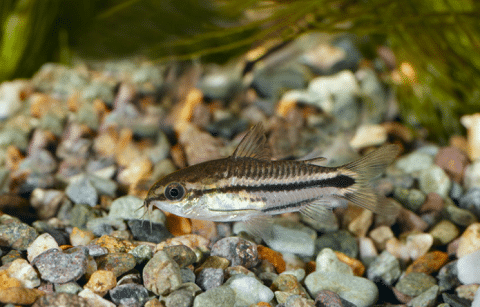
Cory catfish are very peaceful critters, but they aren’t good for axolotl tanks. These fish have sharp spines on their dorsal and pectoral fins that will injure your axolotl if it tries to swallow them. They are also bottom feeders which places them in direct competition with the bottom-dwelling axolotl.
3. Otocinclus Catfish

The otocinclus catfish is another fish that may seem completely harmless. Unfortunately, it also has spines like the cory catfish. The otocinclus also prefers fast-moving water and will zip around the aquarium at high speed. These are all characteristics that make it unsuitable as a tank mate for an Axolotl.
4. Shrimp
Freshwater Shrimps aren’t ideal for Axolotl aquariums, in fact, many owners use them as treats for their pets. Small shrimp may stand a chance if there’s sufficient plant cover to hide in. Most of the time, however, they will get gobbled up pretty fast.
Ghost shrimp and Amano shrimp are excellent addition to any freshwater aquarium. They help to clean up any leftover food. This in turn helps to keep the parameters in your aquarium stable.
Both Amano shrimp and ghost shrimp make perfect snacks for axolotls. You will need to be okay with them being eaten while they keep the tank clean. Axolotls have an excellent sense of smell so these shrimps may not even be safe in dense plant cover.
FAQS
Do these fish get along with others?
Yes, but mostly only as adults. Younger axolotls tend to be cannibalistic which can lead to lost limbs and other problems. Keeping males and females together will lead to breeding so be prepared for 1500 babies.
Can they live with angelfish?
No, angelfish are warm-water fish whereas axolotls prefer cool water. Angelfish are also fin-nippers, so even if it was possible, you still wouldn’t be able to keep them together.
Will they eat fish?
Yes, if they can catch them, they’ll eat their fish buddies. If you keep small fish with an axolotl, there’s always the chance of seeing one or two disappear. Small fish like mosquito fish are often used as axolotl snacks.
Can Other Fish Live together?
Yes, but this setup is never without risks. Small fish can get eaten or your axolotl can get harassed by fin-nippers. There’s also the risk of your axolotl choking or becoming impacted when swallowing prey that is too big for its digestive system.
Can they live with turtles?
No, turtles have different care requirements from axolotls. Turtles are also quite aggressive and unpredictable which can lead to an injured axolotl.
Final Thoughts
Now that you know a bit about axolotls and the creatures they may get along with, you can make an informed decision on whether or not you should go forward with this plan. Keep in mind that the risks do outweigh the benefits of having buddies in the same aquarium as your axolotls. Isolation is even preferred by these underwater salamanders.
If you have any questions regarding axolotls and the critters that can live with them, leave a comment below.
- About the Author
- Latest Posts
I’m thrilled that you found Aquarium Store Depot! Here you’ll find information on fish, aquariums, and all things aquatics related. I’m a hobbyist (being doing this since I was 11) and here to help other hobbyists thrive with their aquariums! I adhere to a high quality Editorial Process and Review products with real life field usage and practical analysis.

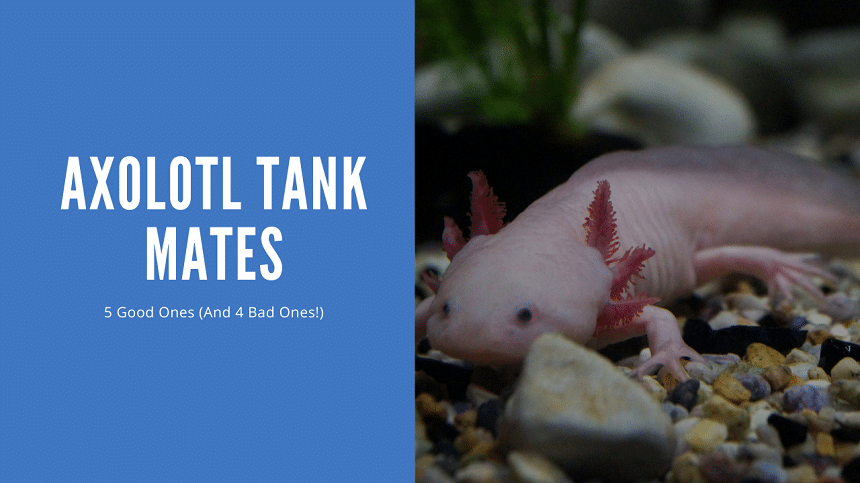
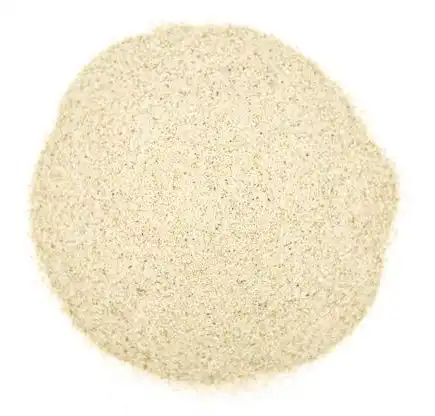




I’ve recently got an Axolotl after years of having swordtail fish and I’m wanting to find great tank mates for my Axolotl.
I wanted to know if swordtail fish are great for living with an axolotl by chance. Since I’ve heard from a friend that her Axolotl is great with swordtail fish.
Can they live with Vampire Shrimp?
I’m honestly not sure, and you are the first to ask. While they aren’t aggressive, I would be concerned with their size if they could harm the Axolotl.
What about clams or mussels? Because they’re bottom-dwellers will they compete with axolotls, too?
I’m not that familiar with them on the freshwater side. Only with reef tanks. I don’t really see them offered in fish stores so I would say probably not, but I would catch with someone who has experience with them.
What is the best and safe fish to live with axolotis
Hi, I have an empty 100 gallon tank.. but before I make any decisions, I wanna do my due-diligence, by researching first.. so I currently have a Four-lined Pimelodus Pimelodus blochii Cat (8 inches long); a featherfin Catfish (about 6 inch); a pleco (10 in) & a female African Clawed frog (she’s quite large/ bigger than my fist).. they’re all between 2-3 yrs old rn!! Ideally, I’d love to add them to this larger tank, but an axolotl is my first priority for this tank.. I see you’ve already ixnayed my current fish.. given the space, several caves & most likely, a steady supply of guppies what about the clawed frog, as long they’re similar in size & fed everyday?!
can i put small kois with axolotls?
Hi there. Koi would fall into the same category as goldfish. They would not be an ideal tank mate because of their foraging nature. They will nip and pick on your axolotl. They also will get very large over time